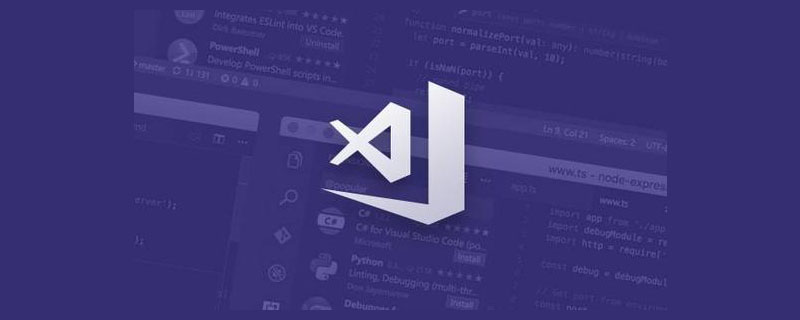 Backend Development
Backend Development PHP Tutorial
PHP Tutorial Develop PHP ERP system to implement purchase order management functions
Develop PHP ERP system to implement purchase order management functionsAs an enterprise grows and develops, purchase order management becomes more and more important. An efficient purchase order management system can help companies achieve rapid order processing, accurate data recording, and effective inventory control. In order to meet the needs of enterprises, many enterprises choose to develop a customized enterprise resource planning (ERP) system to better manage purchase orders. This article will explore how to use PHP to develop a powerful purchase order management module and integrate it into the enterprise's ERP system.
First, we need to define the functions and requirements of the purchase order management module. A complete purchase order management system should include the following functions:
- Purchase order creation: Users can create new purchase orders through the system and fill in relevant information, such as suppliers, products , quantity, price, etc.
- Purchase order approval: The system should have an approval process for management to approve purchase orders. The approval process can be customized according to the needs of the enterprise, for example, multi-level approval, department approval, etc. can be set up.
- Supplier management: The system should be able to manage the company's supplier information, including the supplier's contact person, address, contact information, etc.
- Product management: The system should be able to manage the company's product information, including product name, specifications, price, etc. At the same time, the system should be able to automatically update the available quantity of a product based on stock availability.
- Purchase order query: Users can query and browse created purchase orders through the system. The system should provide a variety of query conditions, such as suppliers, products, order status, etc.
- Purchase order statistics: The system should be able to generate statistical reports of purchase orders based on a certain time range, such as order quantity, amount, supplier ranking, etc.
Next, we will use PHP language to develop this purchase order management module. PHP is a simple, easy-to-use language that is widely used in Web development and is very suitable for developing enterprise-level application systems.
First, we need to set up a PHP development environment. We can use some integrated development environments (IDE), such as PhpStorm, NetBeans, etc. At the same time, install a web server, such as Apache or Nginx, and configure the PHP interpreter.
Before development, we need to create a database to store purchase order-related data. We can use MySQL or other relational databases to create a database and design the corresponding table structure. In this example, we can create a database named "purchase_order" and create three tables "orders", "suppliers" and "products" in it to store purchase order, supplier and product information.
In PHP code, we can use database extensions such as MySQLi or PDO to connect and operate the database. We can use predefined SQL statements to query and update data in the database.
Next, we need to create the PHP files of each functional module and write the corresponding code. We can use object-oriented programming methods to organize code to improve code readability and maintainability.
In the purchase order creation module, we can provide a form for users to fill in order information, and insert the order data into the database when submitting the form.
In the purchase order approval module, we can determine whether approval is needed based on the status of the order. If approval is required, we can store the approval results in the database and send notifications to relevant users.
In the supplier and product management module, we can provide corresponding pages to manage supplier and product information. Users can add, modify and delete supplier and product data and save the data to the database.
In the purchase order query and statistics module, we can query the corresponding data from the database according to the user's query conditions and present the results to the user. We can also use PHP's chart library to generate statistical reports and display the reports to users in the form of charts or tables.
During the development process, we also need to consider some security and usability issues. For example, we need to ensure that user-entered data undergoes effective checksum filtering to prevent SQL injection and cross-site scripting attacks. At the same time, we also need to perform performance testing and optimization to ensure the stability and response speed of the system.
In general, purchase order management is a very important part of business operations. By using PHP to develop a powerful purchase order management module and integrating it into the enterprise's ERP system, it can help the enterprise achieve rapid order processing, accurate data recording, and effective inventory control. Through reasonable design and development, we can build a customized ERP system that meets the needs of the enterprise and improve the management efficiency and competitiveness of the enterprise.
The above is the detailed content of Develop PHP ERP system to implement purchase order management functions. For more information, please follow other related articles on the PHP Chinese website!
 微信小程序中PHP开发的翻页特效实现方法Jun 01, 2023 pm 01:51 PM
微信小程序中PHP开发的翻页特效实现方法Jun 01, 2023 pm 01:51 PM在微信小程序中,PHP开发的翻页特效是非常常见的功能。通过这种特效,用户可以轻松地在不同的页面之间进行切换,浏览更多的内容。在本文中,我们将介绍如何使用PHP来实现微信小程序中的翻页特效。我们将会讲解一些基本的PHP知识和技巧,以及一些实际的代码示例。理解基本的PHP语言知识在PHP中,我们经常会用到IF/ELSE语句、循环结构,以及函数等一些基本语言知识。
 微信小程序中PHP开发的常用工具库介绍Jun 01, 2023 pm 07:40 PM
微信小程序中PHP开发的常用工具库介绍Jun 01, 2023 pm 07:40 PM随着微信小程序的普及和发展,越来越多的开发者开始涉足其中。而PHP作为一种后端技术的代表,也在小程序中得到了广泛的运用。在小程序的开发中,PHP常用工具库也是很重要的一个部分。本文将介绍几款比较实用的PHP常用工具库,供大家参考。一、EasyWeChatEasyWeChat是一个开源的微信开发工具库,用于快速开发微信应用。它提供了一些常用的微信接口,如微信公
 如何利用PHP开发商城的满额赠礼功能May 22, 2023 am 10:02 AM
如何利用PHP开发商城的满额赠礼功能May 22, 2023 am 10:02 AM网上购物已经成为人们日常生活中不可或缺的一部分,因此,越来越多的企业开始关注电商领域。开发一款实用、易用的商城网站也成为了企业提高销售额、拓展市场的必要手段之一。在商城网站中,满额赠礼功能是提高用户购买欲望和促进销售增长的重要功能之一。本文将探讨如何利用PHP开发商城的满额赠礼功能。一、满额赠礼功能的实现思路在商城开发中,如何实现满额赠礼功能呢?简单来说就是
 微信小程序中PHP开发的加密和解密实现方法Jun 01, 2023 am 08:12 AM
微信小程序中PHP开发的加密和解密实现方法Jun 01, 2023 am 08:12 AM随着微信小程序在移动应用市场中越来越流行,它的开发也受到越来越多的关注。在小程序中,PHP作为一种常用的后端语言,经常用于处理敏感数据的加密和解密。本文将介绍在微信小程序中如何使用PHP实现加密和解密。一、什么是加密和解密?加密是将敏感数据转换为不可读的形式,以确保数据在传输过程中不被窃取或篡改。解密是将加密数据还原为原始数据。在小程序中,加密和解密通常包括
 PHP开发中提供效率的VSCode插件推荐(值得收藏)Mar 30, 2021 pm 07:31 PM
PHP开发中提供效率的VSCode插件推荐(值得收藏)Mar 30, 2021 pm 07:31 PM本篇文章给大家推荐一些VSCode+PHP开发中实用的插件。有一定的参考价值,有需要的朋友可以参考一下,希望对大家有所帮助。
 微信小程序中PHP开发的状态码和错误处理方法May 31, 2023 pm 07:52 PM
微信小程序中PHP开发的状态码和错误处理方法May 31, 2023 pm 07:52 PM作为目前最流行的社交媒体平台之一,微信已经成为了企业和个人互动沟通的重要渠道之一。而微信小程序则更加方便用户使用和开发者创新。在小程序开发中,PHP是一种重要的后端技术,但是在开发过程中很容易出现状态码和错误处理方面的问题。本文将介绍微信小程序中PHP开发的各种状态码和错误处理方法。一、微信小程序中的状态码在微信小程序中,HTTP状态码(HTTPStatu
 微信小程序中PHP开发的文本框自动完成功能实现方法Jun 01, 2023 pm 07:42 PM
微信小程序中PHP开发的文本框自动完成功能实现方法Jun 01, 2023 pm 07:42 PM随着微信小程序的普及,各类开发需求也日渐增多。其中,文本框自动完成功能是小程序中常用的功能之一。虽然微信小程序提供了一些原生的组件,但是有一些特殊需求还是需要进行二次开发。本文将介绍如何使用PHP语言实现微信小程序中文本框自动完成功能。准备工作在开始开发之前,需要准备一些基本的环境和工具。首先,需要安装好PHP环境。其次,需要在微信小程序后台获取到自己的Ap
 微信小程序中PHP开发的自动更新方法Jun 01, 2023 pm 11:40 PM
微信小程序中PHP开发的自动更新方法Jun 01, 2023 pm 11:40 PM近年来,移动互联网的快速发展和移动终端的普及,让微信应用程序成为了人们生活中不可或缺的一部分。而在微信应用程序中,小程序更是以其轻量、快速、便捷的特点受到了广泛的欢迎。但是,对于小程序中的数据更新问题,却成为了一个比较头疼的问题。为了解决这一问题,我们可以使用PHP开发的自动更新方法来实现自动化数据更新。本篇文章就来探讨一下微信小程序中PHP开发的自动更新方


Hot AI Tools

Undresser.AI Undress
AI-powered app for creating realistic nude photos

AI Clothes Remover
Online AI tool for removing clothes from photos.

Undress AI Tool
Undress images for free

Clothoff.io
AI clothes remover

AI Hentai Generator
Generate AI Hentai for free.

Hot Article

Hot Tools

Safe Exam Browser
Safe Exam Browser is a secure browser environment for taking online exams securely. This software turns any computer into a secure workstation. It controls access to any utility and prevents students from using unauthorized resources.

ZendStudio 13.5.1 Mac
Powerful PHP integrated development environment

SublimeText3 English version
Recommended: Win version, supports code prompts!

Zend Studio 13.0.1
Powerful PHP integrated development environment

Dreamweaver CS6
Visual web development tools





